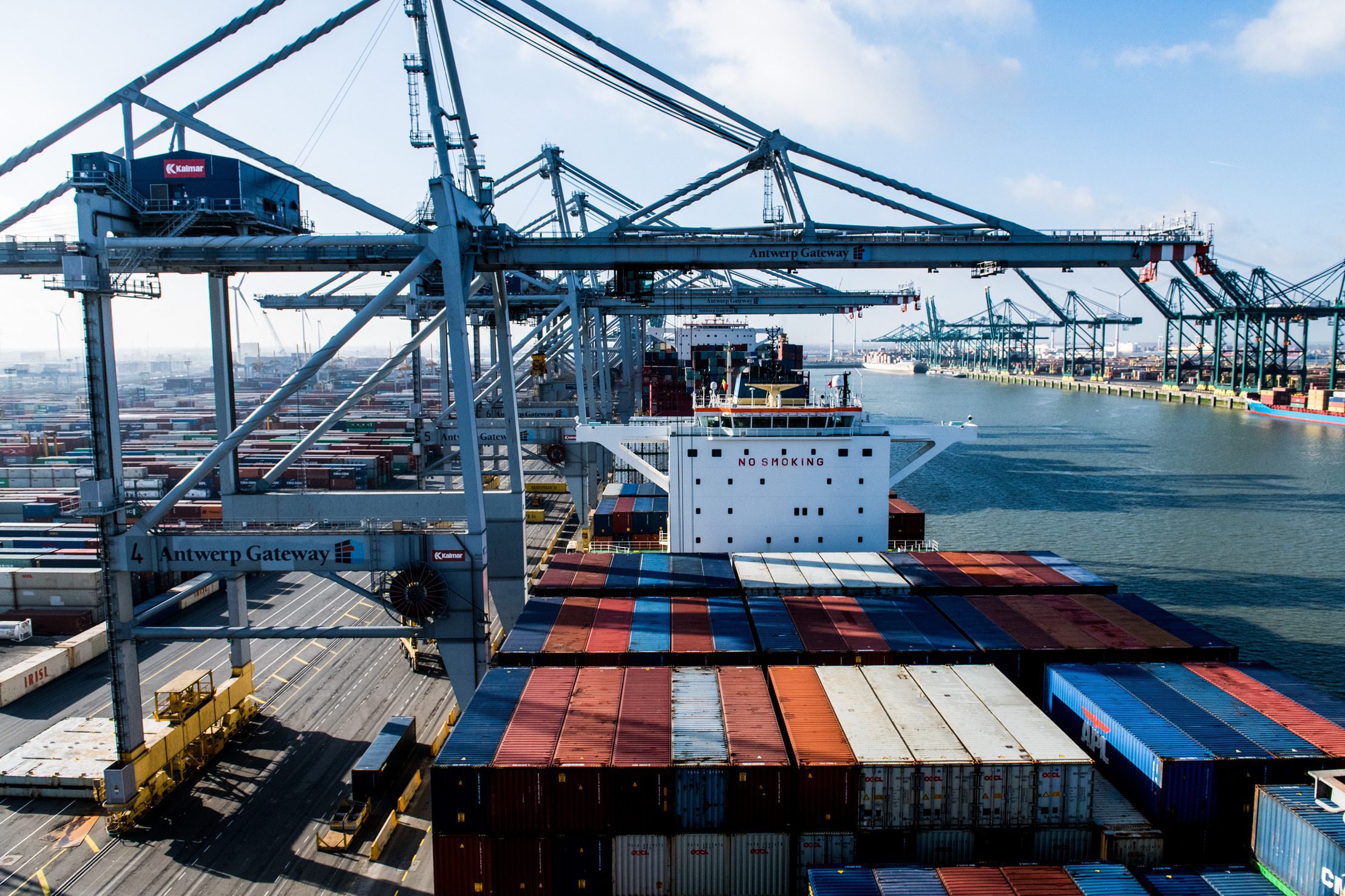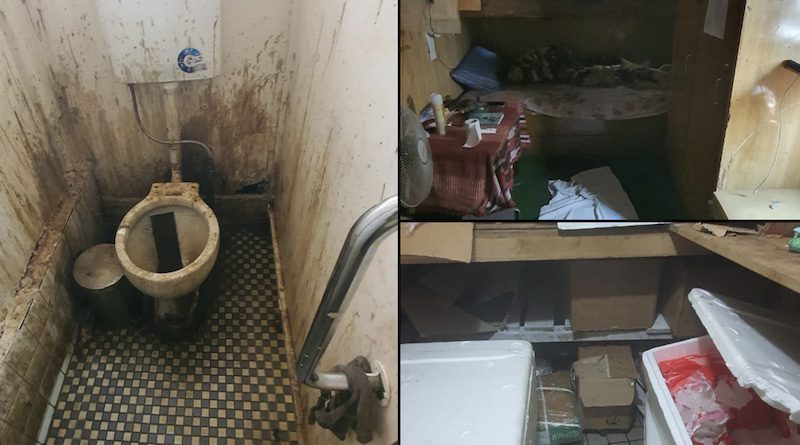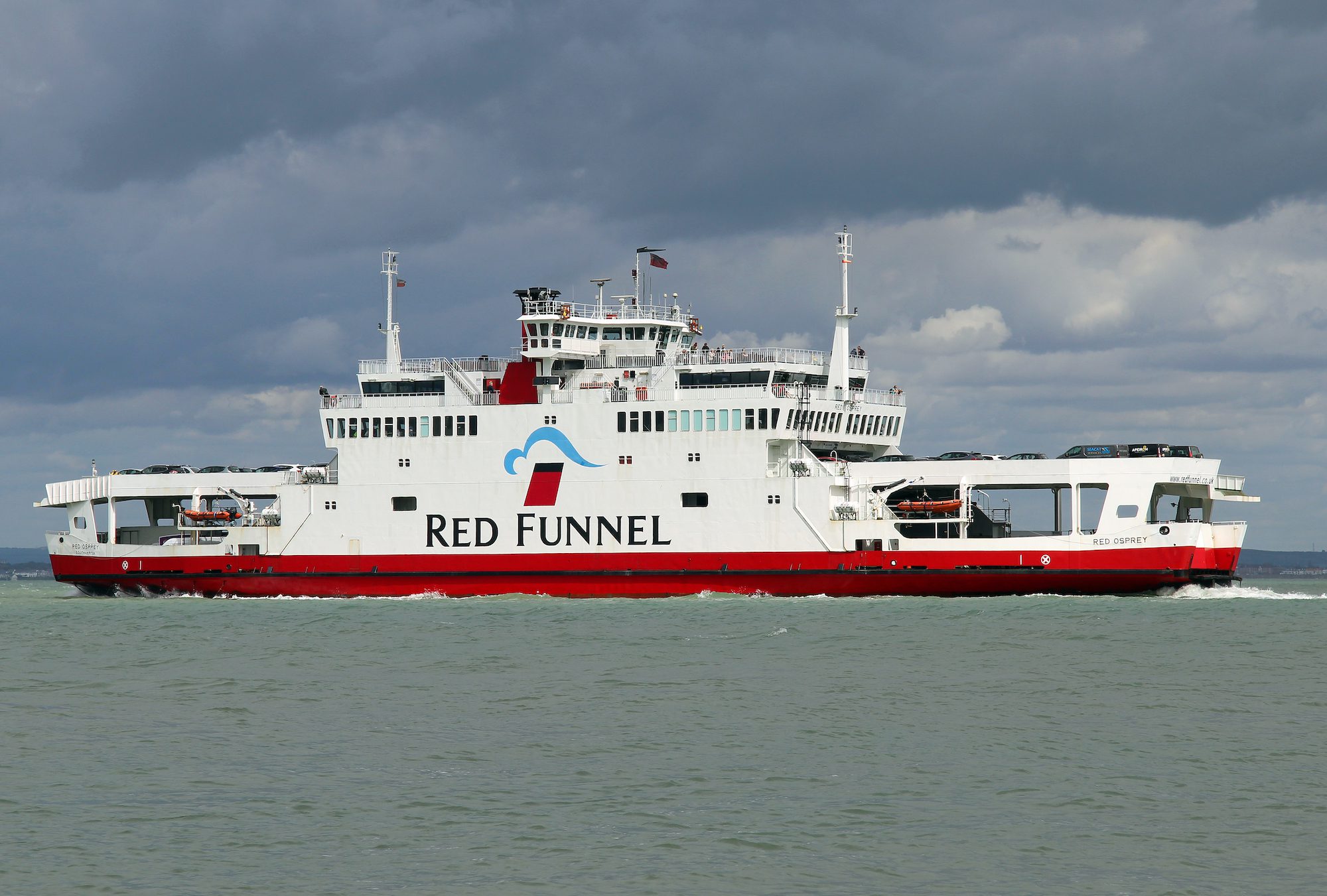By Max Ramsay, Lyubov Pronina and Cagan Koc (Bloomberg) —
On a chilly night in March, harbor police at Belgium’s Antwerp port nabbed three youths crawling over a barbed-wired fence at one of its quays. A few nights later, two more were caught in the same area. The five teenagers — three of them minors — were all Dutch and were looking for one thing: a shipment of cocaine.
The increased frequency of such incidents are a telling sign of how criminal gangs, often using minors who get lighter penalties, have brazenly turned Europe’s second-largest port into a key entry point of what’s become a cocaine superhighway.
Cocaine seizures through Antwerp have grown more than 20-fold over the last decade, according to the United Nations Office on Drugs and Crime. By the Belgian customs service’s own admission, it manages to capture just 10% to 40% of the cocaine coming through the port — noting that even that measure could be way off the mark since the scale of the problem is hard to determine.
The European Union’s drugs agency puts the minimum retail value of the bloc’s illicit substances market at €31 billion ($33 billion), with a street value of the roughly 120 metric tons of cocaine seized at Belgium’s largest port in 2023 in the billions of euros by the most conservative estimates.
With drugs flooding into already troubled neighborhoods of cities across Europe, bringing gun violence and gang wars, the issue is becoming one politicians can no longer ignore. It’s also bubbling up in Belgium’s upcoming national election on June 9. The Belgian government, which currently holds the EU’s rotating presidency, has made the war on drugs a top priority and is drumming up support from other member states.
“It is not a problem of Antwerp. It’s not a problem of Brussels. It’s not a problem of Belgium. It’s not a problem of Europe. It’s a worldwide problem,” Justice Minister Paul Van Tigchelt said in an interview in his office in Brussels, noting that the country cannot tackle the challenge of drug crime on its own.
The surging trafficking at the port has made Antwerp Europe’s cocaine capital, according to wastewater data collected in 88 cities from 24 countries by an EU agency called the European Monitoring Center for Drugs and Drug Addiction. Five cities from the Netherlands also made it into the top 10.
Efforts to address the issue have included increased scanning of shipping containers, stepped-up security at ports and the creation of a region-wide port alliance to stem a so-called water-bed effect, where tightening security at one place pushes traffic to another. Although the steps are a good start, they don’t go far enough to address the problem, says Bart De Wever, who has been the mayor of Antwerp for the last 11 years.
“There’s too little budget to take the real measures that could make a difference,” De Wever said in an interview. “To root it out is impossible but to limit it to, say, an acceptable level, that should be possible. If that is not our ambition, then we’ve simply given up.”
The size of the Antwerp port — equal to more than 22,000 football pitches — and the massive scale of the products it handles have made it a sweet spot for dealers, turning Belgium into a transit hub. The amount of goods unloaded and loaded has more than doubled over two decades, with 271 million metric tons handled last year.
The port is the primary European destination for Latin American goods, the main source of cocaine entering the region, making it an obvious target for drug cartels. Sprawled over a territory larger than Paris, the port handles over 12 million containers annually, creating a range of challenges for police — and opportunities for organized crime.
In an event last week, Antwerp maritime police described one frequent tactic: the use of Trojan Horse containers, where young men hide inside empty containers that are moved to the port so they can sneak out and retrieve cocaine from another inbound container. They return to their original container, which is then retrieved from the port. The whole operation often takes several days.
While drug seizures at Europe’s ports have continued to hit fresh records every year, it’s taken the spillover of violence into daily life to jump-start a response from authorities. Shootings have become almost a weekly occurrence in Brussels, even in the capital’s most high-end neighborhoods. Data tracked by daily newspaper Le Soir shows the numbers of shooting increased steadily over the past two years, coupled with bombings in Flanders and threats against public officials.
Dutch Pipeline
Once the cocaine arrives in Antwerp, some 90% of it is believed by Belgian customs officials to move across the Dutch border to be treated and parceled before being sent across Europe through a labyrinthine network of dealers and thugs.
While Rotterdam was once a favorite port of entry for the raw product, tightened security there pushed the trade toward Antwerp.
Dutch officials have been intercepting an increasing amount of cocaine in recent years. Seizures jumped 18% to 60,000 kilograms in 2023 from a year earlier, according to the Netherlands’ customs data. In one incident alone, Dutch authorities at the port of Rotterdam last year seized a record 8,064 kilograms of cocaine that had been hidden in a container with bananas, with a recordstreet value of €600 million. In 2022, Bloomberg reported on Balkan gangs operating in the Netherlands and Belgium that infiltrated container ship crews over more than a decade. They used speedboats, bribery and threats to get their cargo aboard.
Another frequent method of smuggling cocaine through container ships involves attaching the drug to the hull underwater using magnets, ropes or even welding, according to Dutch authorities. Catching such shipments requires diving under the water to inspect the hulls of giant vessels. A diving team from the Dutch customs is deployed in Antwerp to help Belgian authorities with such inspections, according to the Netherlands’ State Secretary for Customs Aukje de Vries.
It was the murder in 2019 of Derk Wiersum, a lawyer defending a key witness in a case of drug killings, followed by the shooting of crime reporter Peter R de Vries in 2021 that brought the issue into focus in the Netherlands. The country’s drug-related violence has spiked dramatically over the past few years with more than 250 house explosions this year alone related to gang turf wars, according to the Dutch police.
Brazen Attacks
In Belgium, the turning point came when an 11-year old girl was killed in the crossfire from a drug-related shooting last year. Former Justice Minister Vincent Van Quickenborne also spent months living under round-the-clock protection, taking shelter in safe houses following threats of kidnapping. In France, some suburbs of cities like Paris and Marseille see regular battles for turf control between gangs.
“It’s getting worse,” EU Home Affairs Commissioner Ylva Johansson said in a recent interview. “As we have these record seizures, we also see prices are not going up and purity is going up so that means there is a lot of available cocaine in the European market.”
Unlike the US, EU member countries have never really waged an official war on drugs.
The authorities learned the hard way how little criminals used to worry about customs checks at ports, says Kristian Vanderwaeren, the head of Belgium’s federal customs service. The cracking of encrypted telephone services Encrochat and Sky ECC in 2020 and 2021 led to thousands of arrests and the seizure of hundreds of millions of euros in illicit revenues from criminal activities. The investigation gave law enforcement an unprecedented insight into the network and, Vanderwaeren says, examples of how criminals were “laughing” at port checks, something he thinks is starting to change.
The audacity of the gangs was evident when over the course of a month late last year they made three attempts to take back cocaine shipments that had been seized by the Port of Antwerp, armed on one occasion with automatic weapons and on another with machetes.
“It was out of control,” Vanderwaeren said in an interview. “I really feared for the security and safety of my people.” He thinks these attacks are evidence that his officials are finally starting to impact drug gangs’ business, with seizures of previously unprecedented quantities of cocaine in the port.
“We need to stay here and make their lives as difficult as possible,” Belgian Interior Minister Annelies Verlinden said last week in an interview.
More Inspections
Belgian authorities plan to step up the scanning of inbound containers, aiming next year to double the current capacity of 40,000 per year, and to continue increasing the monitoring until they dent the influx of cocaine, according to Vanderwaeren. Port workers, who number 16,000 in Belgium, will also undergo stricter security screenings.
At the EU level, Johansson set out a road map last year, with a particular focus on reinforcing ports. It included creating a Ports Alliance, a forum of port and security officials, which has started meeting.
The heads of ports have shared the fears they have for their workers, particularly with criminals working to corrupt and intimidate them to secure their compliance, according to a commission official.
Amsterdam’s mayor, Femke Halsema, has suggested the legalization and regulation, not just of cannabis, but also substances like cocaine. It’s a view not widely shared among EU officials and national ministers.
Officials say the way to crack down on the leaders of organized crime is to limit their impunity and seize their assets. Belgian officials have sought to make progress on extraditions from countries where criminals tend to hide, including the UAE, Morocco and Turkey, and have called for more international pressure on those countries. In March, Belgium secured a long-sought extradition order under drug trafficking charges from Dubai, which minister Van Tigchelt hailed as a sign of important progress.
“There is no miracle solution,” he said in a separate interview last week at the Port of Antwerp. “We will never ban cocaine, we will never win the fight. But I am convinced that we can break the backbone of the mafia, the business model of the mafia.”
© 2024 Bloomberg L.P.
Unlock Exclusive Insights Today!
Join the gCaptain Club for curated content, insider opinions, and vibrant community discussions.

 Join The Club
Join The Club













